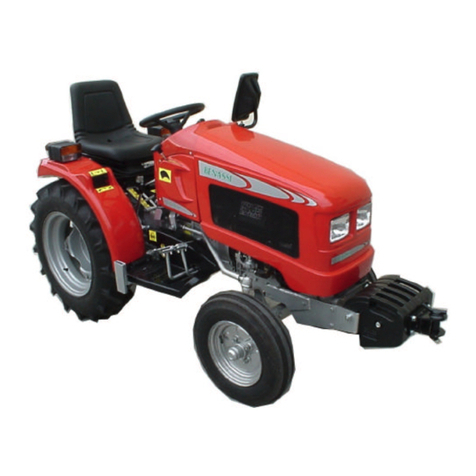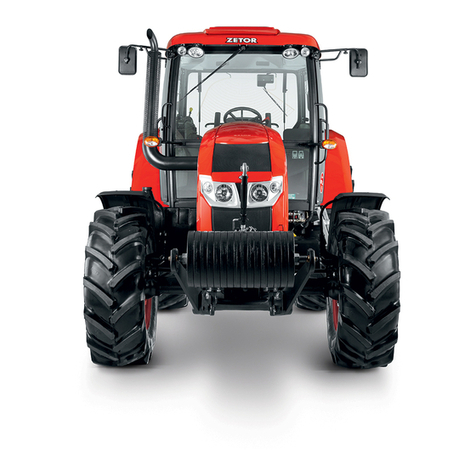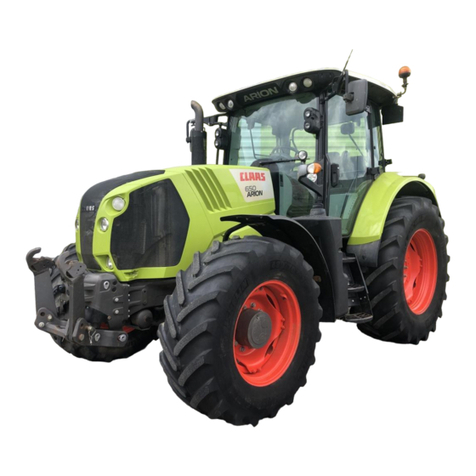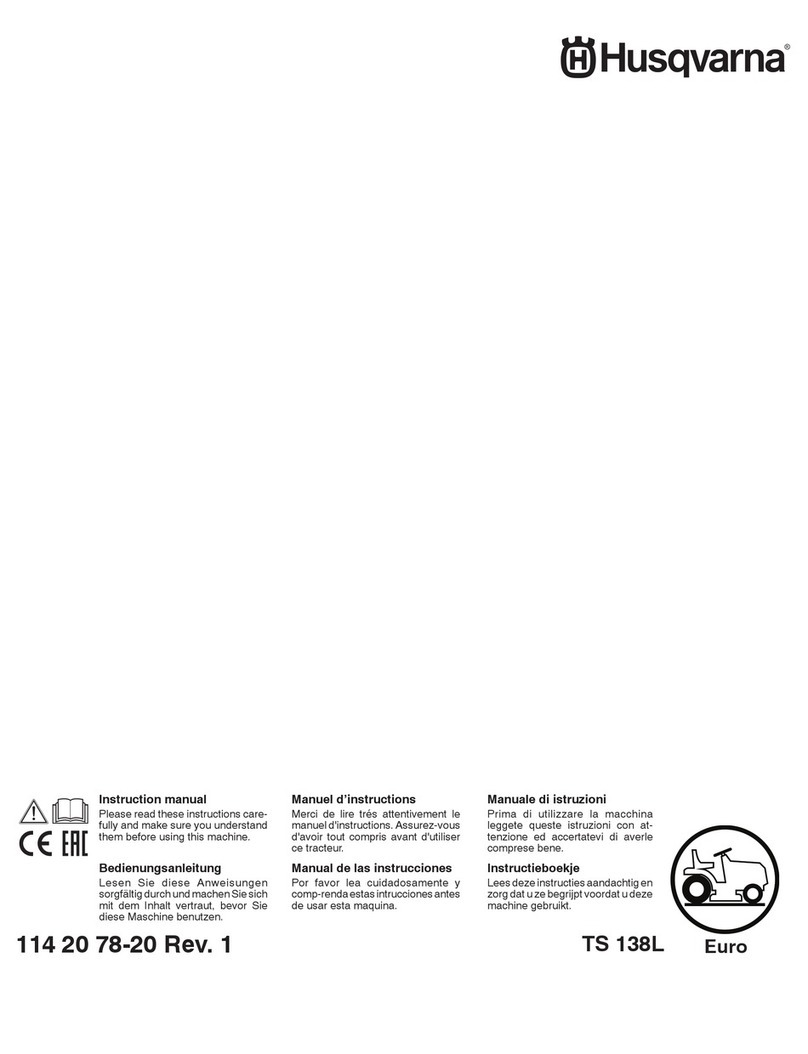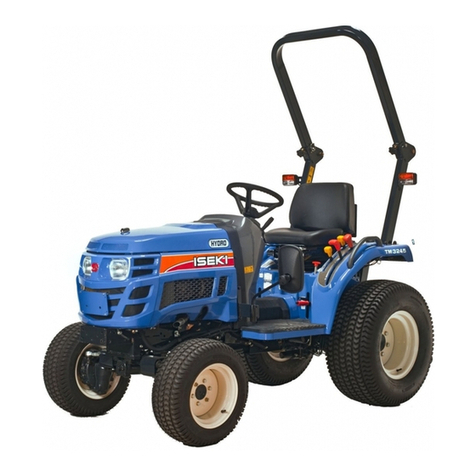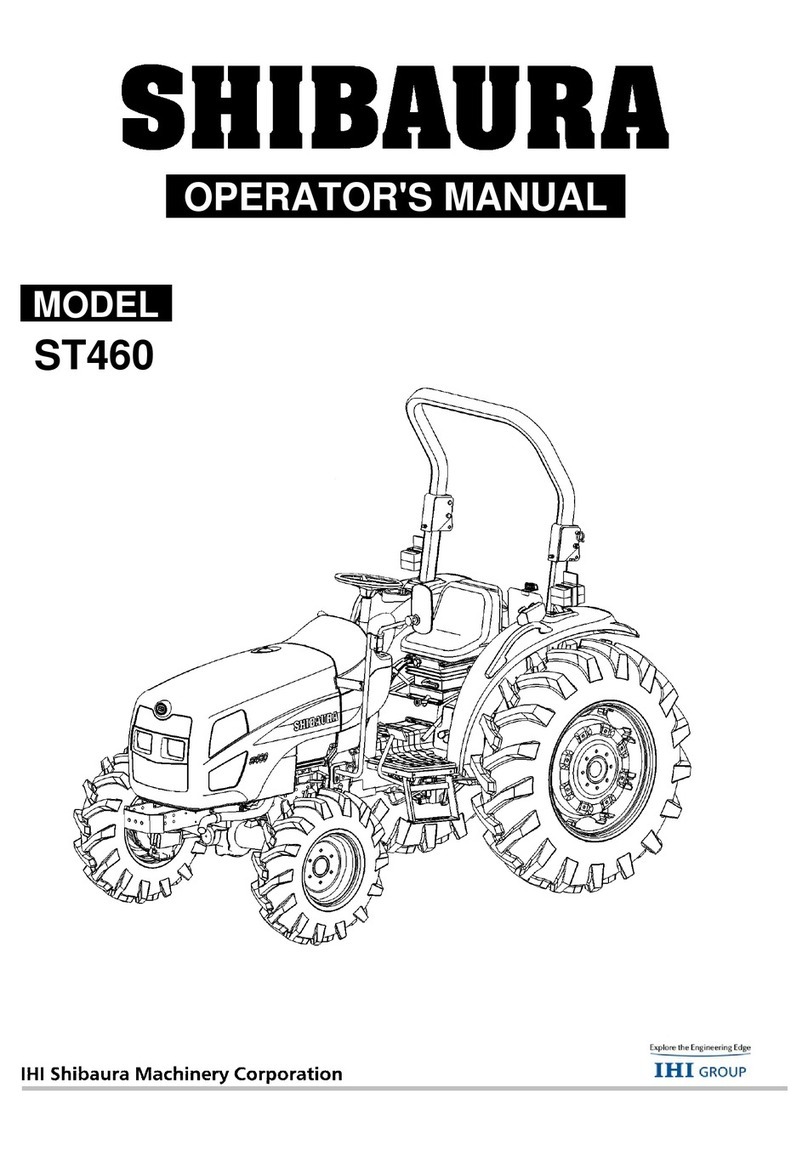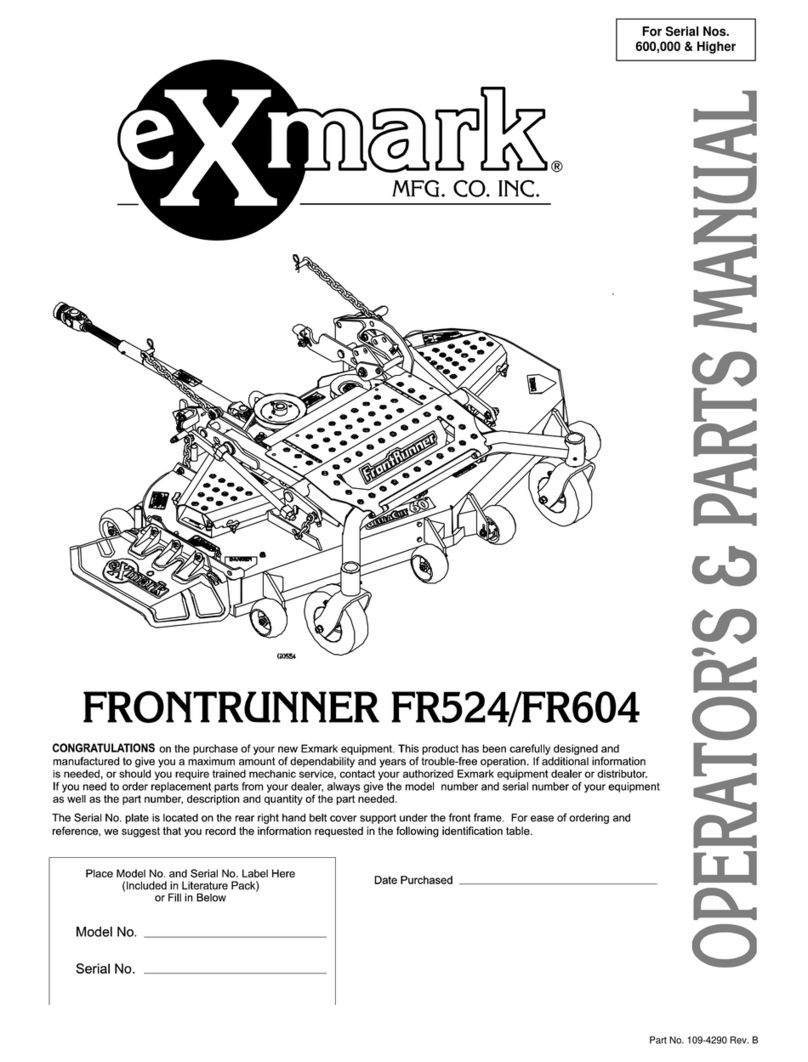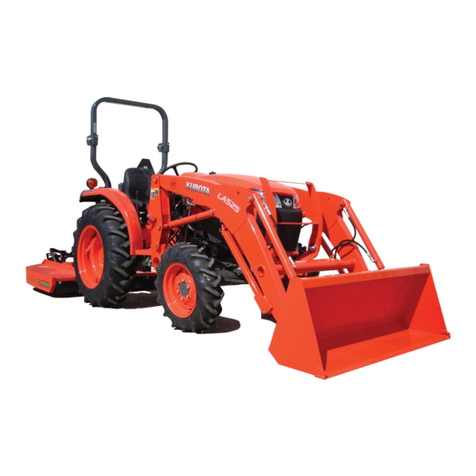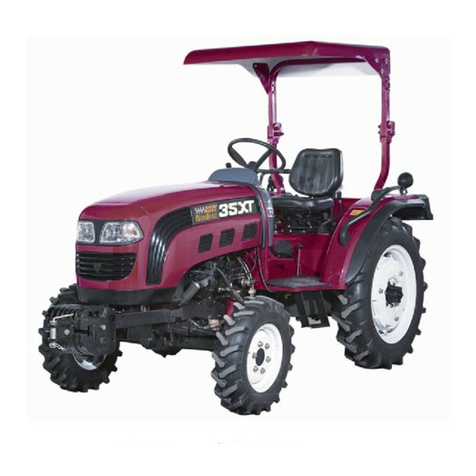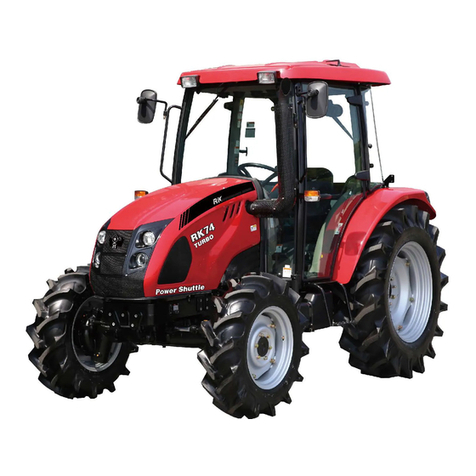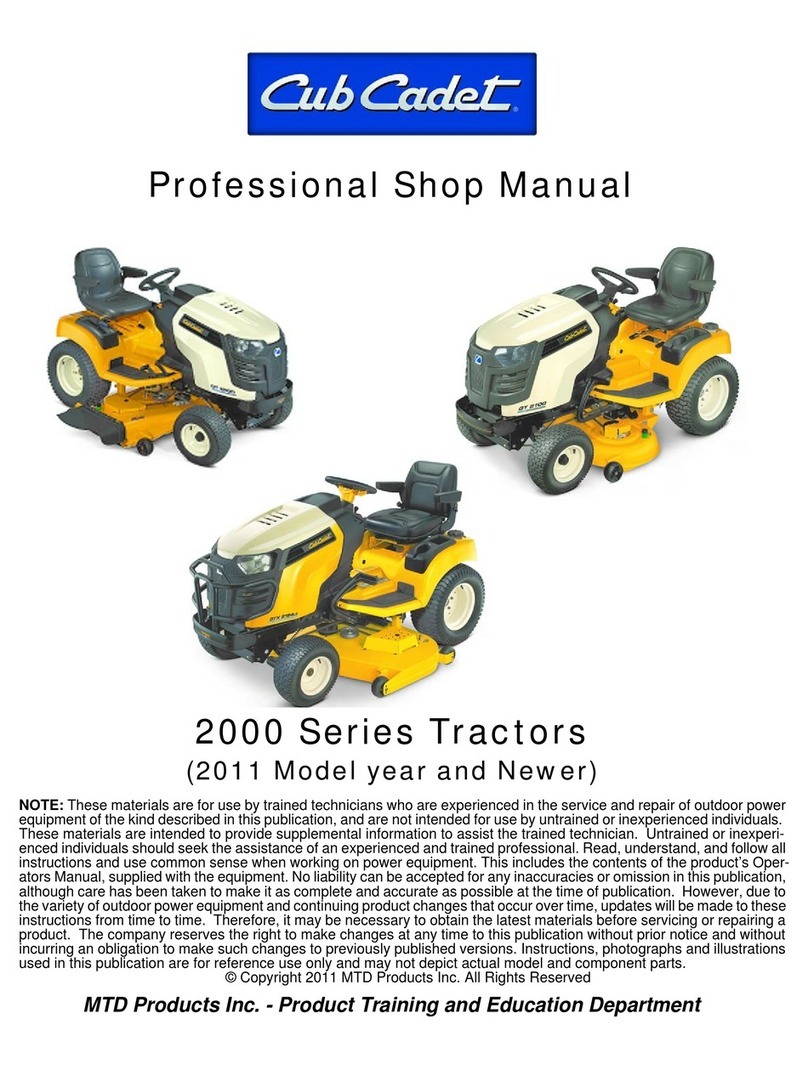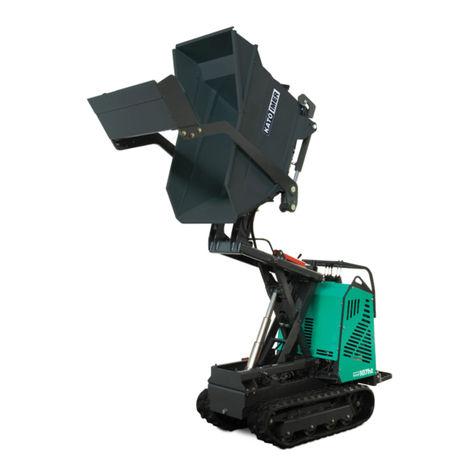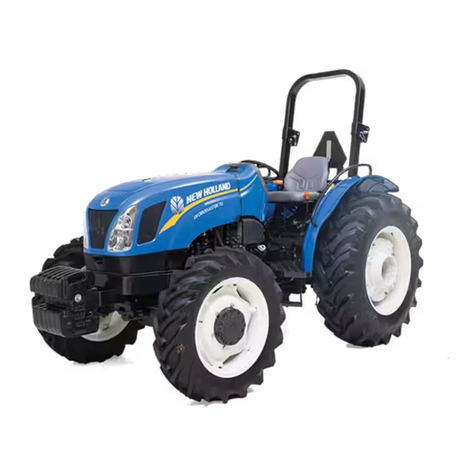SLL A33 User manual

A33
Agricultural Tractor
General safety information for CPCS technical test
This is for guidance purposes only and does not relate directly to specific CPCS technical test questions. It should only be used as a refresher or
as part of a training course and not in place of training. These notes are provided free for your use only and should not be reproduced or sold to
another party. (Re printed with kind permission of Cleraune Plant Training Limited).
1
SLL PLANT AND QUARRY TRAINING SERVICES LIMITED

Health and safety at work act 1974 – designed to protect people and the environment from work
place activities. It places certain duties and responsibilities on employers, employees, self- e m p l o y e d people,
designers and manufactures.
• Employer’s responsibilities - must ensure workplaces under their control are safe and free from
hazards. Ensure the safety of employees, self-employed, visitors, trespassers and the general public who could be
affected by the work. Everything they provide for use, tools, plant and equipment must be fit for purpose, safe to use and
the personnel trained to use it
• Employee’s responsibilities- must take care of them selves and others who may be affected by their
acts or omissions. Co-operate with their employer. Do not tamper with or interfere with or misuse anything provided for
safety
• Failure to comply with legislation- could result in loss of you job and all the financial implications that
can bring but it could also result in prosecution. The severity of the breach of legislation and any accidents or incidents
related would dictate what type of court proceedings you could face. If you have fulfilled your legal requirements and can
provide proof of this in court then you would likely be found Not Guilty but If you were found guilty you could face a prison
sentence or a substantial fine
To fully understand the above Act specific training and guidance is required
Method Statement- detailed description of how to carry out a job safely and efficiently. All involved in the work
must be briefed on its contents. Workers must follow the Method statement unless they fell it is not suitable then they
should stop and report it and have the method statement amended. Competent people must only amend Method
Statement
Risk Assessment- is a legal requirement before work starts. It is a detailed assessment of the risk involved in
doing and job and provides information on how to reduce the risk level down to an acceptable level.
Hazards- this is anything, which can cause harm to people plant or equipment.
• Excavations or Trenches – risk of collapse. The minimum distance to keep away from open
excavations is at least the depth of the trench i.e. if its 2m deep you stay 2 m back
• Working at height- any place you can fall from and be injured is considered working at height. The top of a
mound, climbing into or out of a machine. Standing by the edge of a n excavation
• Slopes- where ever possible the weight always faces up hill i.e. empty dumper skips face downhill and loaded
skips face uphill. Extreme care should be taken if working across a slope. Avoid turning on slopes if possible
• Overhead cables- the minimum distance to be maintained form over head cables mounted on wooden
poles is 9m from the greatest reach of the machine and 15m from cables on metal pylons. Electricity can arc or
jump a gap.
• Confined spaces- anywhere there is restriction on operating area can be considered a confined
space. There is a greater risk of accident or damage. The Minimum distance, which should be maintained
between a fixed, obstacle and the machine is 600mm (this is deemed to be the smallest distance a person can
go through without being injured). If this distance can’t be maintained then the area should be fenced off and
signs erected. Fumes, dust, noise, lack of visibility and insufficient room to maneuver are all hazards associated
with confined areas
• Plant operations – are regarded as “safety Critical operations” because of the potential risk of an
accident. Plant Operators can cause harm to themselves or other people if they carry out an unsafe act.
• Pedestrian areas- care should be taken when operating in pedestrian areas. A safe route for
pedestrians should be provided with suitable signage and lighting. Enough room for material storage and vehicle
movements is required. Noise, dust and fume levels should be reduced where possible. Required permits,
method statements and risk assessments should be in place.
2
SLL PLANT AND QUARRY TRAINING SERVICES LIMITED

LOLER- Lifting Operations and Lifting Equipment Regulations
This is an amendment to a European regulation. It deals with all aspects of Lifting and has specific requirements
including.
• Trained people and competent people doing the job
• Plant and equipment tested and certified
• Work planed and supervised
• SWL clearly marked on all equipment
• Thorough examination- all plant used for lifting must be examined and certified by a competent person.
If the plant is used for lifting personnel then it must be tested every 6 months if it is not used for lifting personnel
the it is every 12 months. The purpose is to check for structural damage as well as defective operation
• Lifting accessories- Must be suitable for the job, be tested and certified, be in good condition.
• Lift Plan- is a detailed description of how to carry out a lift. An Appointed person produces the Lift plan, a lift
supervisor implements the plan and supervises the job
• Contract Lift- with a contract lift the crane company provides the lift plan, the equipment, the personnel
and the insurance. They are in control of every aspect of the lift and assume responsibility for the lift
• LOLER Register- operators should complete the LOLER register weekly. Pre-use inspections should be
carried out as per the Manufactures instructions. Recorded in the daily/weekly inspection sheet and any defects
recorded
• LOLER Regulations- do not apply to the Three Point Linkage of a tractor but do apply to the front end
loader if fitted
To fully understand LOLER specific training and guidance is required
PUWER – Provision And Use Of Work Equipment Regulations
This is an amendment to a European regulation. It deals with the use of plant and equipment and has specific
requirements including
• Restraint systems- seat belts must be worn at all times to prevent injury in the event of the vehicle
overturning
• ROPS (Roll over Protection Structure) -prevent injury in the event of the vehicle overturning
• FOPS- (Falling Object Protection Structure) prevents injury from falling debris. If fitted to a
vehicle then you do not need to wear the hard hat inside
• Training and Instruction- you must receive adequate instruction and training on any equipment before
you can operate it
• Fit for Purpose- work equipment must be fit for purpose and safe to use
• Information- Operators Manuals and other information relating to the safe use of equipment must be
with the equipment. This is to allow operators to check and gain necessary
information To fully understand PUWER specific training and guidance is required
Environmental issues-
• Refueling- should only be done in a designated area. Clean containers and funnels should be used. Any
spillage should be cleared up using suitable equipment. Waste should be disposed off in designated bins.
• Condensation- the machine should be refueled at the end of the shift to prevent condensation building up in
the tank as the machine cools down
• Reducing environmental damage- Operate safely, operate efficiently. Tip materials in designated
places, don’t mix materials, Switch off when not in use, Don’t overfill when refueling, check tyre pressures, report
leaks or damage, clear up spillage, dispose of waste in designated bins. Follow method statements and COSHH
assessments
• Designated routes- should be adhered too. This will avoid damaging un-spoilt ground, or completed work,
or unnecessary contact will other plant or people
Types of Ag Tractor uses and limitations-
3
SLL PLANT AND QUARRY TRAINING SERVICES LIMITED

• Two Wheel and Four Wheel Drive Tractors- general- p u r p o s e machines used to
transport materials around site. Can operate purpose made implements attached to the Three Point
Linkage, tow a variety of trailed implements or use purpose made fore end loaders.
• Four Wheel Drive- should not be used on solid firm ground like yards or roads as it can cause excessive
tyre wear
• Crawler Tractors- ideal for Fieldwork using a large range of heavy attachments. Also used as
Tractor Dozers
• Classification- Tractors are referred to by their Horse Power
• Independent Braking- Separate brake pedal operates the brakes on each side of the tractor are used to
improve steering and maneuverability. Both pedals must be latched together when travelling on the road
Pre Use Inspections-
• Plant should be checked according to the manufactures specifications. The checks should be recorded in
the defect book or daily check sheet. Any defects should be reported
• Suitable PPE (gloves) should be worn when carrying out the prestart checks to prevent skin disease and
contaminating the controls
• Engine oil, Hydraulic oil, Transmission oil, Coolant, Brake fluid, Tyres and the condition of the Tractor
should be checked
(Checks will vary depending on make and model always read the operators manual)
• If topping up with oil always do so in the designated area, use clean funnels and jugs or containers and
clean around filler cap to prevent dirt entering the system
• Most dumpers are fitted with a radiator to keep the engine cool. This is a pressurised system which pumps
water around the engine keeping temperature down. Do not open a hot radiator or filler cap as the hot
liquid inside will be released under pressure and could scald or burn
• If operator maintenance or servicing requires the operator to work beneath the raised skip then the skip
safety strut must be used to prevent the skip falling down and crushing the operator
Plant Stability-
• Travelling or operating the machine affects the stability. Overloading the machine, travelling across
slopes, carrying uneven loads, turning at speed, poor tyre pressure, too close to excavations can all lead to
instability and possible overturning.
• Centre of gravity- is the point of balance of a load or of the machine. The higher a load is lifted the higher
the centre of gravity of the machine goes. This can affect the stability of the machine. As the load moves forward
(i.e. as a Tele-handler booms out or a dumper tips the load) the centre of gravity moves forward this could cause
the machine to tip up if the machine is over loaded or not operated on suitable ground.
• Tyres- tyre condition can affect stability. The lugs or tread on a tyre provide grip assist steering and help with
breaking. Worn or bald tyres can cause skidding or sliding, make it difficult to steer and are more susceptible to
puncture. A damaged tyre could burst which would result in a loss of control and a possible accident
USING TRAILED EQUIPMENT/HITCHING UP TO A TRAILER-
• Check the trailer/implement is fit for purpose and compatible with the tractor and hitch system
• Check the condition of the hitch
• Line up the tractor and reverse back slowly. If using a Banks man ensure they are in a safe position and
use clear communication
4
SLL PLANT AND QUARRY TRAINING SERVICES LIMITED

• Never allow anybody to stand between the tractor and the trailer while the tractor is moving- your foot could
slip of the brakes/clutch
• When in position raise the Pick Up Hitch and lock. If using a swinging draw bar stop the tractor (SAFE
STOP) and fit the drop pin and clip
• Connect all hydraulic hoses (clean ends to ensure a secure fit and to prevent leaks or dirt entering the
system) and cables
• Raise and jacks or skids to the travel position
• Attach any lights, reflectors or guards which may be necessary
• It may be necessary on some occasions to add weights to the front of the tractor to aid traction, steering
and stability (check handbook)
• If using a conventional draw bar always ensure that a purpose made tow pin is used and a safety
clip is fitted to prevent the tow pin coming out during travel
Hydraulic Pick up Hitch-
• Used mostly for towing trailers. Allows quick changes of trailers with out the operator leaving the seat.
Trailers must be secure and all hoses and cables detached before dropping them off. The max gap at the
top of the hitch must be no more than 10mm
Potential Hazards when using Trailed Equipment-
• Trailers which are too heavy can cause rearward rollover on steep inclines
• Heavy loads can affect steering and increase stopping distances
• High or awkward loads can affect the tractors stability
• Greatly reduce visibility to the rear
• Large trailers require more room to maneuver
• Ground needs to hold the combined weights of the tractor and trailer
Loading the Tractor and Trailer-
• Position the Trailer where the machine driver indicates ensuring that it is on level ground
• Handbrake on and switch off
• Do not allow the machine Driver to overload the Trailer
• Do not allow the machine driver to load over the tractor
• Dismount the Tractor maintaining three points of contact if the tractor is not fitted with a FOPs cab
What you need to know about the load-
• The weight of the material to prevent overloading
• Is the material contaminated- ensuring you wear correct PPE
• Type of material- ensuring you tip onto the correct stockpile
• Is it liquid- might slosh around when moving and affect stability
• Is it sharp edged- spillage might cause tyre damage
• Loose or dusty might require eye protection or respiratory protection
Travelling with a Tractor-
• Don’t drive too fast for the situation or task
• Select the correct gear for each job
• Drive slowly when – on rough or soft ground, or slippery ground, when cornering, or using independent
braking, CORNERING, travelling on slopes or near ditches or in adverse weather conditions and towing
trailed equipment,
5
SLL PLANT AND QUARRY TRAINING SERVICES LIMITED

Mount the Tractor and fit seat belt
will secure operator to the seat and reduce potential injury in
the event of overturning
Start
the
Tractor
using
the
safe
start
procedure
Safe Start Procedure-Never start a machine unless you are trained to use it and have authorization to do
so. Read the handbook and correctly identify all the controls. Never start a machine unless you are in the
seat. Check the area around is clear. Make sure the handbrake is fully on and all gears and controls are in
neutral. Start the engine
• Engage gear
• Sound horn to warn others in area
• Look all around to ensure its clear then release handbrake and move off
• Travel at a speed suitable for the load and the conditions
• Never over load the dumper
Overloading can affect stability, cause spillage, tyre damage, and put strain on the Tractors hydraulics when
tipping, and cause structural damage
Operating on a slope-
• Avoid driving across a slope as there is an increased risk of overturning
• Avoid tipping downhill- the centre of gravity moves forward as tipping begins and this could
cause the dumper to tip
• Avoid turning on slopes
• Be aware of the affect on stability that a heavy implement can have
• Before working on steep slopes have appropriate training
• Ensure that the tractors brakes and steering are in good condition
• Four Wheel drive is advisable as it will improve traction and grip
• Wet weather can make a seemingly slight slope hazardous
• Understand the soil and ground type before travelling on a slope
Discharging the load into a trench-
• Tip on Level ground
• Use stop blocks
Stop Blocks – provide a physical barrier to help prevent the dumper rolling into the trench when tipping.
The also help the operator to see where the edge of the excavation is
• Use a banks man
• Handbrake on and out of gear
• Ensure there is no one in the trench
• Ensure any services are propped and secure
• Ensure the side of the trench can support the Tractor
6
SLL PLANT AND QUARRY TRAINING SERVICES LIMITED

• Ensure it is the correct material
• Level ground
• Tip slowly if the material is sticky or wet as it may stick to the trailer and the increase in the height of the
centre of gravity and weight may cause the trailer to tip
Towing or Pulling with the tractor
• Do not attach a tow rope to the tractor higher than the back axel as this could cause the tractor to stand up
on the rear wheels and cause serious injury and damage
Three Point Linkage- is designed to fit purpose made attachments to the tractor and to raise and lower them
and to control the operating height
Connecting up to the Three point Linkage-
• Use the right hitch system and pins
• Only use controls from the operating position
• Take care when using the external controls
• Never stand between the tractor and an implement or allow anybody to do so unless the tractor
is stationery
• Never stand with your feet under or near drawbars
• Ensure that jacks, skids and other supports are used and maintained
• Communicate clearly if you get help with hitching
Using External Controls for Three Point Linkage-
7
SLL PLANT AND QUARRY TRAINING SERVICES LIMITED

• Look in the operator’s manual to find out where to stand when using external controls
• Only use external controls in accordance with manufactures instructions
• Do not place any part of your body between the tractor and any mounted implement when
operating external controls
Additional Factors to consider when using an implement on the Three
Point Linkage-
• Additional weight may affect steering and stability
• Additional weight may affect braking and stopping distances
• Implements will increase the length and may make it harder to maneuver in confined areas
• The overall width may be increase with some implements
PTO-
• The PTO transfers power from the tractor to an implement such as a vacuum tanker
• PTO shafts speeds can be 540RPM or 1000RPM
• The shafts can be identified by the number of splines - 540 shaft = 6splines, 1000 shaft =21splines
• The speed makes the PTO very dangerous
• In a PTO entanglement you are caught before you can react and serious injuries occur in seconds
• An entanglement can occur in the knuckle area or where the driveline shaft slides together
• The PTO line must be fully guarded to prevent any one or thing getting caught and wound around it
• Do not wear loose clothing when working near PTO Shafts/Lines
• Do not wear clothing with draw strings
• Tie up long hair and cover with tight fitting hat
• Do not wear long ewelery
• Never step over a Drive line in use or allow anybody else to do so as guards could come loose
and spin with the shaft
8
SLL PLANT AND QUARRY TRAINING SERVICES LIMITED

Attaching the PTO
• Follow safe stop to ensure nothing will move
• Check the implement is fit for purpose and all guards are in good condition
• Once PTO is connected ensure all guards are fitted and properly chained
• Report any faults
• Do not use an implement with a damage PTO shaft
• Safe Stop -Handbrake fully applied. All controls and equipment in neutral. Stop the engine. Remove key
•
Parking The Tractor-
• Park on level ground
• Do not block entrances or exits
• Do not park on soft or wet ground
• Do not block pedestrian routes
• Do not leave on stockpiles or close to trenches
• Handbrake on and out of gear
• Allow engine to idle for 1-2 minutes before switching off to allow turbo to slow down. Failure to do this
could damage the turbo
• Remove key and isolate to prevent unauthorised use
Travelling the machine on the Public Highway
• Machine must be clean
• Taxed and insured
• Tyres, brakes and lights meeting road legal standards
• Number plate
• Operator must hold the correct Full UK Driving license category B, and be over 18 for Tractors up to 7.5 t
and be over 21 for Tractors over 7.5 t For Agricultural Purpose Class F at 16 years for tractors up to 2.45
meters wide and 17 years for wider machines. Tractors can be driven on the road on a provisional license.
A qualified driver is required to accompany the provisional driver if a passenger seat is fitted to the tractor
Transporting the machine-
• The transporter driver is responsible for the loading operations
• A level area with sufficient room to maneuver should be selected
• No overhead obstructions
• The machine should be clean
• The transporter should be suitable and in good condition
• The ramps should be adjusted to suit the machine
• The operators manual should be consulted to find the loading procedures
• A banks man should be used
• The area should be free of people and other plant
9
SLL PLANT AND QUARRY TRAINING SERVICES LIMITED
Table of contents
